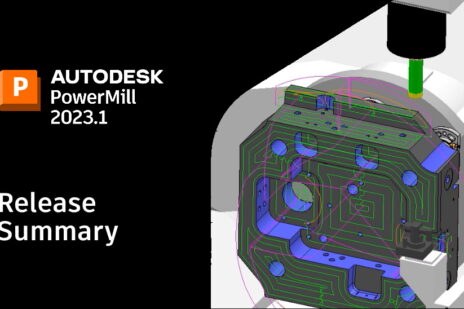
Over the years there have been plenty of false dawns with supposedly ‘revolutionary’ technology. Segways and maglev trains were supposed to revolutionize transport. Sony mini-discs were quickly superseded by the iPod. It’s easy to become skeptical when you hear about the next big thing.
But some innovations are so powerful that it’s apparent they will change the way we live right from the get-go. World-wide-web anyone?
Generative design is one of those ideas that is guaranteed to be a game changer.
Let’s take a look at exactly what it is and why it’s set to change the world of design and manufacturing forever.
What is generative design?
Generative design is a process that iteratively changes a design from an initial concept to a fully-optimized final model. The typical process involves a design engineer setting design objectives and parameters in a specialist software package, which then uses cloud computing to run thousands of iterations, gradually improving the design. It then presents several final options to the designer who can accept a design or edit it.
CAD (Computer-Aided Design) and CAM (Computer-Aided Manufacturing) software such as Autodesk Fusion 360 has cloud-based tools built into it, which means that optimized designs can be quickly produced and automatically prepared for manufacture.
The power of evolutionary design
The main reason this is such a game changer is that it produces designs that are beyond the imagination of human designers. The results often take unusual forms that are, at times, counterintuitive. For instance, the internal structure of items can be strengthened by removing material, creating a lattice or honeycomb interior. Often, the results look almost alien-like or highly futuristic.
Another benefit is the reduction in design time and the ability to accelerate the product development cycle. The computer will optimize products for desired physical properties far more quickly than a person or a team of engineers could. This means that higher quality products can be produced in a fraction of the time compared to traditional design methods.
Autodesk Fusion 360 allows additive manufacturing techniques to be combined with the design process, meaning prototypes can be quickly and easily 3D printed and tested. Once a final design has been chosen, the software will program the additive or subtractive manufacturing equipment to produce the final products.
A good example of generative design in practice is the training shoe developed by New Balance. A customer’s foot measurements can be inputted into design software with customizable parameters such as performance, comfort, running style, etc. The software then optimizes the sole design, creating a perfect match for the individual. It’s plain to see the massive benefits that this process will have for consumers and businesses alike.
Applications of generative design
It’s fair to say that the applications are pretty much unlimited. Any product or part that needs designing, i.e. all of them, will benefit from the process.
But some industries and niches will benefit more than others from highly optimized designs. Here are a few examples:
Aerospace and Automotive
One thing that is of the utmost importance to aerospace and automotive engineers is the strength and durability of parts, while minimizing the overall weight. Specialist software that tests and improves every permutation of the design is ideal to accomplish this objective. Many aerospace and automotive engineering companies have already adopted these design practices and are at the cutting edge of innovative technology. For example, Airbus has implemented Autodesk generative design software to create unorthodox design solutions.
Architecture and Construction
Autodesk used their own technology to design a unique layout for their Toronto offices. By setting objectives and design constraints, they ended up with offices that are optimized for maximum productivity and convenience.
Structural features can also be designed that satisfy both practical and aesthetic goals.
Industrial Machinery
Manufacturers of industrial machinery often work in highly specialized areas that have very specific demands. The iterative design approach is an ideal technique to innovate ways to improve the functioning of industrial equipment and heavy machinery.
Designing the future
Generative design, although conceived more than 20 years ago, is still in its infancy. The technology has only recently become available to make it a viable replacement for traditional design methods.
As technology progresses over the coming years and becomes more affordable, it’s likely that the evolutionary and iterative approach to design will become commonplace.
In years to come consumers may even be able to log onto a website, input some details and place an order for a bespoke generatively designed product that will be 3D printed and shipped to them in a short time frame. To put it simply – the future will be generatively designed.



Add comment
Connect with: Log in
There are no comments